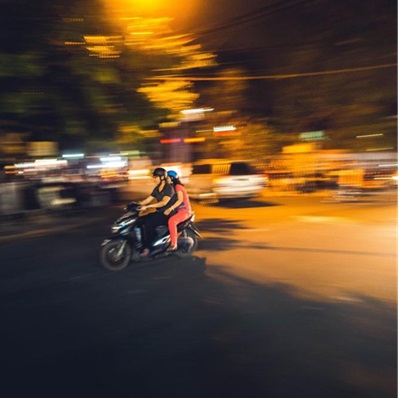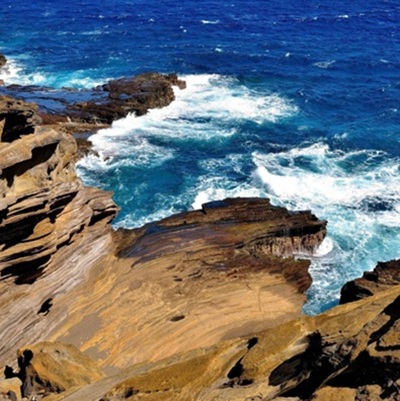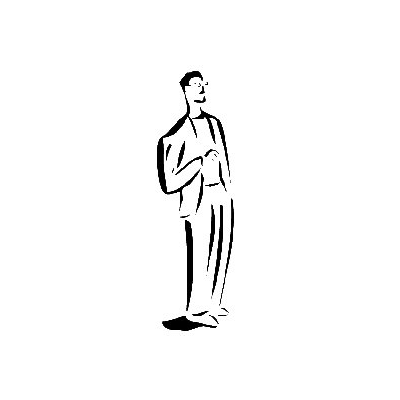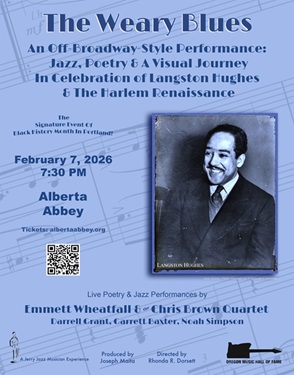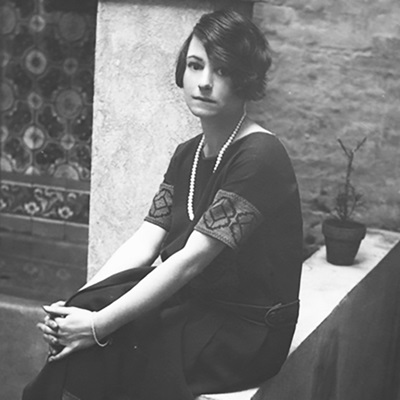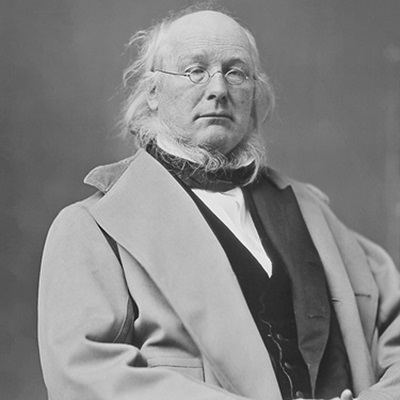As jazz critic for the New Yorker magazine since 1957, and author of fifteen books, Whitney Balliett has spent a lifetime listening to and writing about jazz. Generations of readers have learned to listen to the music with his graceful guidance.
In our interview with Whitney Balliett, he discusses his latest book, Collected Works: A Journal of Jazz, 1954-2000 (St. Martin’s Press), which collects a bounty of his reviews, reporting and portraits. In it are definitive portraits of such major figures as Duke Ellington, Dizzy Gillespie, Django Reinhardt, Buddy Rich, Charles Mingus, Louis Armstrong, Billie Holiday, Art Tatum, Bessie Smith, and Earl Hines.
He has published two other summary volumes, American Musicians II (1996) and American Singers (1990). Balliett’s knowledge is an encyclopedic treasure, and yet he has always written as if he were listening to jazz for the first time. He deftly captures the essence of musicians and performances from all styles of jazz.
The critic Nat Hentoff wrote, “Duke Ellington would say of a very few musicians that they were beyond category. Among those of us who write about jazz, so is Whitney Balliett.”
We are greatly honored by his participation in our exclusive Jerry Jazz Musician interview.
Interview by Paul Morris.
__________________________________
JJM I and many other fans of jazz have your writing to thank for introducing us to many players and singers, such as Pee Wee Russell, Bobby Hackett, and Ruby Braff. Are you conscious of your role as a guide?
WB I have received letters that have said as much, but I haven’t thought of that very often.
JJM What would you say is the role of the music critic?
WB I think the role of any critic is, first, to explain or describe what it is that he is crticizing, and then make his evaluation. In so doing, you help the reader to decide what is good, or at least lead him to what you think is good or bad.
JJM Can you talk about what it is like rereading and reconsidering 45 years of writing? What kind of revising that you did?
WB It surprised me. I went through a huge pile of stuff and discarded maybe a fifth of what I felt was either repetitive or not up to par. I did quite a lot of rewriting, because of the amateurish quality of some of the material from the 50’s and early 60’s.
JJM In your book “Collected Works,” you had some interesting postscripts and updates to your articles. In your piece on Woody Herman, you wrote, “I don’t agree with this rather sour piece,” although by and large you didn’t revise your opinions
WB I don’t think that it makes sense to change the original opinions in a piece. If I disagreed with what I said then I put it at the end, like the one you just read.
JJM Does a writer or a listener change his mind over time about particular musicians or styles? To what extent have your views changed?
WB I think my views of the various people who are considered in the book are pretty much the same; I don’t think they have changed. If my opinions had changed about certain people, then generally those were the people that I left out of the book. If I go back to their earliest times, I might have changed my mind about certain facets of their styles or career, but by and large I think what is there is constant.
JJM Your enthusiasms have been wide ranging. You have often written about the swing era players, but your very first New Yorker column in 1957 discussed Cecil Taylor. Is ecumenical taste a valuable thing for a critic?
WB Yes, of course. I think as you get older, your tastes narrow. The great literary critic Edmund Wilson, whom I admired very much, just stopped writing about contemporary things when he got into his late 60’s and early 70’s. He spent all his time re-evaluating earlier writers like James Branch Cabell who were out out of fashion. I find that that’s happened to me a little bit. I do try and listen to the young Turks, but it’s a struggle to keep your vision open and functioning.
JJM Your writing has been lacking in the combativeness, the gathering into schools many jazz critics have found themselves in since the 1940’s, How have you avoided that?
WB By steering by my own light, and at the same time being aware of what other critics are saying. I think you waste time by battling and sending out sharp opinions and dumping on people. It’s a waste of effort and it’s also destructive.
JJM For many years, writers have viewed the history of jazz as a succession of movements or schools, with each one an advance over the preceding one. How do you think this method, which owes a lot to art criticism, how does this suit jazz in America?
WB I think it’s a great mistake, because every school of jazz has its own values and beauties and lyricism. Change is not necessarily progress. You can’t just dump what has come before it because it suddenly appears to be out of fashion.
JJM I think now its easier to take a viewpoint like that. The reissue programs on CD means that now most everything can be found, including the music from the 20’s and 30’s.
WB That’s true, but one thing that is lacking is a sense of knowledge of the past. When I started listening to the music in any detail, in the 40’s, I remember being very curious about what had come before, going back into the 30’s and the 20’s, and whatever was happening in the teens, even though it wasn’t recorded. I think that curiosity is lacking now. A great many of the younger people just don’t have any sense of what came before Coltrane and Miles Davis. They think it all started then. You should have a full sense of where the music came from. After all, each school of music grows out of the one before it, and you should be able to look back and see what the beginnings were.
JJM Could you talk about writing about recordings differs in kind from writing about live performances?
WB Recordings are easy, of course, because you can play it over and over, and it doesn’t go away. Arlene Croce, the dance critic, said some years ago that what you take away from a live performance is a series of afterimages. You take notes, you write down what you heard, but still some of it is going to drift away or become transparent.
JJM Your style has been called “impressionistic.” Your references range from literature to painting to history. You compare Charlie Christian to Josef Albers and you call Milt Jackson “Byronic.” What’s valuable about this method?
WB I have been told that people who read a description I may have written about, say, Pee Wee Russell or Vic Dickenson can then hear the music after reading the description. If that is true, I think it helps the listener – the reader – get into the music a lot more easily than reading a page of notations based on a Dickenson or Russell solo. After all, a lot of jazz cannot be notated, because the notes are open in the cracks and you can’t notate the texture, the sound, or the timbres, the relationship of the player’s style and sound to what he is doing.
JJM Some of the pieces in your book are short, just two paragraphs. You managed to pack in a satisfying statement in each, just as musicians packed a lot into three minute recordings in the days before long playing records. Could you talk about the value of conciseness?
WB Well, a lot of those were short reviews that ran in The New Yorker, perhaps, three of them in one piece. That was partly the way things worked then. When I would cover a jazz festival, I did it in journal form, so that each day and evening would have one entry, then I would go on to the next day, and so forth, so you would get the whole thing at the end.
JJM One of the longer pieces in your book is from 1966, about a trip to New Orleans. Was this originally in the New Yorker?
WB Yes, it was.
JJM That was a new one to me, and a lot of fun to read.
WB It hasn’t been reprinted in maybe 30 years.
JJM Are you, in some sense, do you think, a New Yorker writer? Have the editors or the culture of that magazine shaped your writing?
WB Two of my editors, Popsie Whitaker and Susan Moritz, helped me to avoid silliness and pomposity. But whatever influence there was in those days fell away completely, once I had found my own style and voice.
JJM Has knowing jazz musicians personally been an important part of your experience as a critic?
WB In the beginning, I used to feel strongly that a critic should not hang out with musicians, because it would in one way or another influence his opinions and his writing. But then, I started writing profiles of musicians – I have written a hundred of them – and I unavoidably got to know certain musicians. When I was doing profiles like that, I felt almost like a therapist: I would ask questions and write down the answers and sometimes spend a week of long intense days listening. I got to know certain musicians quite well. If we were congenial, then we would become friends of a sort, even though I might not see them very often. Of course, I still had to review some of these musicians, and if I set down some critical words, that might be the end of the relationships.
JJM Do you think jazz musicians share any personal characteristics?
WB I think the one characteristic that I have found is a great sense of humor, a salty view of life. This helps to counter the hardships most jazz musicians endure – life on the road, lack of work, bad pianos, crooked managers and nightclub owners, tin-eared listeners.
JJM Your profiles, which are collected in American Musicians II, really bring these musicians to life, especially those that are based on interviews and are written in the musicians voice. I think of profiles, for example, of Art Farmer, Pee Wee Russell, Bobby Hackett and others achieve the dimension of a well-drawn character in a novel. How do you do it?
WB Listen! Ask the questions and write the answers down. Some people have made sour comments about how all I do is sit there with a tape recorder. I have never used a tape recorder, ever. I have my own kind of shorthand. What I do when I use a long quote is try to get the sound of his voice, and the rhythm of his talk. I try to distill him.
JJM You choose some telling examples of peoples’ personal lives. I think every time I pack a suitcase I remember your description of Sid Catlett’s method of packing a suitcase.
WB Sid rolled each piece of clothing before it went into the suitcase. You get twice as much in that way.
JJM Earlier this year, you wrote briefly about Ken Burns’ documentary, and you chastised them mildly about some omissions. Now that time has passed, can you say something about the influence, if any, of this series?
WB I wonder if it has had any influence. I thought the whole thing was built the wrong way. Aside from Erroll Garner and Earl Hines and Bobby Hackett and Benny Carter and Charles Mingus and Big Sid being ignored or mentioned only in passing, there was much too much talking, too many talking heads. You never heard enough uninterrupted music on the soundtrack.
JJM The one musician about whom you have written numerous times is the drummer Sid Catlett. I have enjoyed exploring the recordings that you have pointed readers toward. For a newcomer to jazz, or a newcomer to swing, where would be a good place to start, to hear Catlett’s music?
WB The 1947 Symphony Hall concert in Boston, Satchmo at Symphony Hall, with Armstrong’s All-Stars, is available again, and he takes two long, amazing, still modern solos. Others to look into that are available on CD are Benny Goodman and Sid Catlett (Vintage Jazz Classics); Edward Hall – Profoundly Blue (Blue Note); The Blue Note Jazzmen and the Part of Harlem Jazzmen (both Blue Note); Sid Catlett 1944 – 46 (Classics); Esquire’s All-American Jazz Concert (Jazz Archives); The Big Three – Hawkins, Young, Webster (CBS Special Projects); Yardbird Suite – Charlie Parker (Rhino).
JJM A general question about some of the older musicians you wish you could have heard, in person. Any names stand out from the early days?
WB Well, certainly Beiderbecke. I wish I had heard Django Reinhardt, when he was in his prime, and Charlie Christian and Baby Dodds and Bessie Smith and the Louis Armstrong of 1932 – 1933.
JJM Who was your boyhood hero?
WB I don’t know if I had any heroes as a boy. Until I got into jazz and began to understand it and listen to it in the flesh and in records, that is where I found my first group of heroes. There were certain poets that liked as a teenager though, Carl Sandburg and Steven Vincent Benet and people like that The real non-musical heroes came along later: Edmund Wilson, Joe Liebling, James Goulds Cozzens, J.D. Salinger, V.S. Pritchett.
JJM Who were your jazz heroes?
WB Sid Catlett, Roy Eldridge, Coleman Hawkins, Ben Webster, Lester Young, Billie Holiday, Red Allen, Dicky Wells, Count Basie, Buck Clayton, Vic Dickenson, Don Byas, Emmett Berry, Jo Jones, Bobby Hackett, Jack Teagarden, Teddy Wilson, Erroll Garner, Duke Ellington, Jimmy Blanton, Oscar Pettiford, Charlie Parker, Dizzy Gillespie, Fats Navarro, Michael Moore, Gene Bertoncini, Bill Charlap, Joe Wilder, Jimmy Knepper, Jimmy Rowles, Zoot Sims, and on and on and on
JJM Can we look forward to more of your New Yorker columns?
WB I think now and then, yes. The magazine doesn’t come out every week anymore. There are a lot of double issues; space is tight, things have changed.
JJM The more we will see, the more we will appreciate it.
WB Good, you are very kind .
__________________________________
A list of some of Whitney Balliett’s favorite recordings:
– Salt Peanuts, (with Charlie Parker, Dizzy Gillespie and Big Sid Catlett)
– After You’ve Gone (with Sidney de Paris, Ben Webster, Vic Dickenson, James P. Johnson, Big Sid Catlett)
– Going to Chicago (Count Basie)
– Just a-Settin’ and a Rockin’, (Duke Ellington)
– Uptown Blues, (Jimmie Lunceford)
– A String of Pearls, (Glenn Miller, with Bobby Hackett’s immortal solo)
– Funky Blues (with Charlie Parker, Ben Webster, Johnny Hodges, Benny Carter)
– Red Norvo’s Trio with Mingus and Tal Farlow
– Feather Bed Lament (for Benny Carter’s beautiful one-chorus trumpet solo)
– Most of Michael Moore’s and Gene Bertoncini’s duet recordings
Collected Works, 1954 – 2000
by
Whitney Balliet
*
Whitney Balliett at Amazon.com
_______________________________
If you enjoyed this interview, you may want to read our interview with jazz critic Nat Hentoff.







